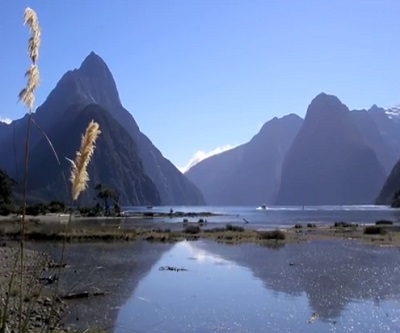
Straterra, the industry group representing New Zealand’s miners, released a statement today that called media coverage of the government’s South Island platinum prospecting and exploration tender “irresponsible and unhelpful.”
New Zealand Petroleum & Minerals (NZP&M) is inviting companies to take part in a competitive tender for metallic mineral exploration permits over five separate areas located in the Southland, West Coast, Tasman and Nelson-Marlborough regions of the South Island.
The tender is open from 20 September 2013 – 30 April 2014.
Here is Straterra’s September 30 press release in full:
A dose of realism urgently needed on platinum tender
The scaremongering around the Government’s South Island platinum prospecting and exploration tender is irresponsible and unhelpful, Straterra says.
“From media coverage over the last few days, you would think vast areas of conservation land are going to be instantly dug up, and streams poisoned, with all of the profits heading offshore,” Straterra CEO Chris Baker said today. “Obviously, such portrayals are a fanciful invention.”
“There is a reality here that the news items, fuelled by the ‘we can’t mine in our back yard’ brigade, completely bypass.”
“This tender covers five areas ranging from 333km2 to 1700km2. This is normal for prospecting. Exploration companies prospect and explore over these large areas in order to find a mineral resource that can be mined. To find a mine is difficult – there is a reason that resource commodity prices are historically high – and the footprint of a mine is always small; 100s of hectares is typical.”
“Of the West Coast’s total area of 23,000km2, mines occupy approximately 4km2. From that very small footprint, mining earns one-third of the region’s household income. No other land use earns anywhere near this amount of value per hectare.”
“During and after mining, mined land is rehabilitated as per the conditions of the resource consents. Every mine is different, but anybody interested can visit the larger mines operating in New Zealand and see what the companies are doing to manage their environmental impact, or contact Straterra for information.”
“The accusation that mining is a case of money rushing offshore is bereft of logic – mine operators pay salaries, taxes, rates, royalties, levies and other charges, provide community support, and make payments to suppliers and contractors, including for environmental management. Mining is a good job to have, earning on average twice the national average wage. Of course, investors expect a return on their investment – without that expectation, the investment will not be made.”
“If one stands back and thinks for a second, this all makes sense. New Zealand has laws. We have standards. Companies want to do right by communities and iwi. We care about our environment.”
“Mining today is a knowledge-based, high-technology industry, employing skilled people, producing necessary materials, in an environmentally-responsible way. Properly encouraged and managed, mining could and should make a much bigger contribution to the New Zealand economy.”
2 Comments
Lyndell Juggernau
Thank you for using the positive voice of reason. as a person who is forced to work overseas I am glad to see someone pointing out the fallacies of nimbyism in New Zealand. I would love to be able to practice my skill set (Project Geologist) on home soil but opportunities are rare
Jeff Saunders
This is certainly the “other side” presenting its case but there are some pretty obvious discrepancies between what is claimed and reality especially around land being rehabilitated – there are some pretty nasty examples in NZ of land NOT being rehabilitated to any acceptable standard and communities being left with toxic residue! If we were to get a better level of compliance on this perhaps the NZ population would not be so concerned!